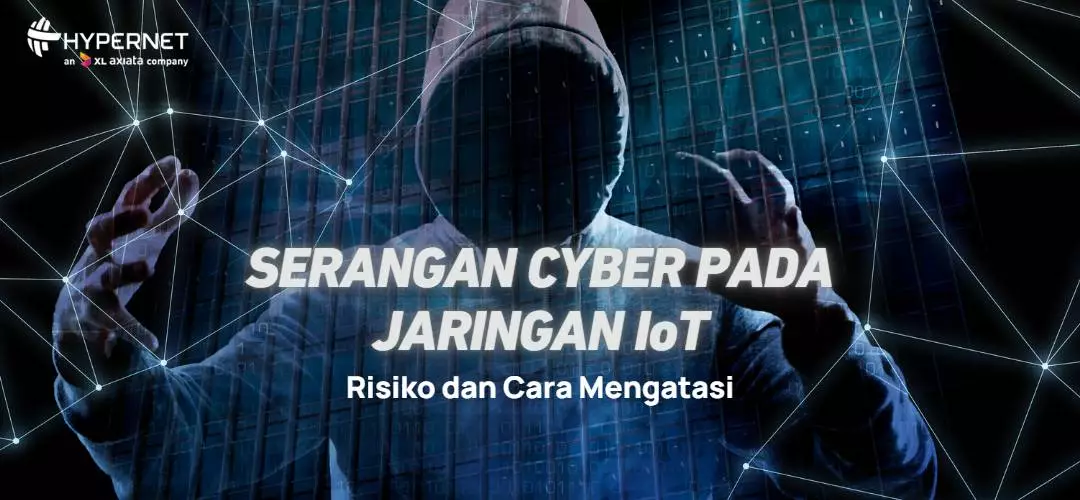Definition of Internet of Things (IoT)
The term IoT refers to a network of “smart” devices that connect and share data with other devices and systems over the internet. IoT-compatible devices generally have sensors, software, and other technologies that can connect them to the internet. IoT devices vary from computers, cell phones, tablets, to home appliances such as TVs, refrigerators, and washing machines.
Cyber attacks on Internet of Things (IoT) networks have been happening for a long time. What has changed is the scale and the way criminals attack these devices.
IoT security risks
#1: IoT devices are attacked with brute force methods
Brute force strategies are still considered effective for gaining unauthorized access to user accounts, enterprise systems, and networks.
How to overcome: Don’t use default passwords
Most IoT devices have default passwords for easy initial setup. Immediately change these passwords with words or phrases that are not easy for hackers to guess.
#2: Physical security and outside intrusion
IoT devices can be accessed from the outside when there is no control in an open environment. Attackers can modify memory or computation, and then obtain additional information by interacting with the compromised IoT device in an attempt to undermine security.
How to solve: Prioritize physical security investments
Hiring security guards and picketers is very effective in preventing intruders from entering and tampering with IoT devices. Also, conduct regular audits and inspections to ensure devices are operating properly.
#3: Problems with Cloud storage
Many companies outsource processes and other IT obligations using cloud computing. This technology has several drawbacks: data loss and theft, data leakage, account or service hijacking, insecure interfaces and APIs, DoS attacks, and technology vulnerabilities.
How to overcome: Make sure there is a mitigation plan in case of downtime
For the sake of business continuity, the downtime of a service should not be too long. Including when exposed to attacks on IoT devices that are allegedly originating from vulnerabilities or impacting cloud computing. Contact the cloud computing provider immediately if an attack occurs, and regularly back up important data.
#4: Botnet Attacks
Operators who control botnets use them for crimes such as spam and phishing emails, DDoS attacks, theft of personal information, and exploitation of online banking data.
How to overcome: Use anti-spam technology
Anti-spam technology is reliable enough to detect a single source sending thousands of emails, but it lacks the ability to recognize when emails are being sent from multiple devices that are part of a botnet. That’s why, in addition to installing anti-spam technology, you also need to make sure the software used by IoT devices is up-to-date and monitor for failed login attempts.
#5: Man-in-the-Middle (MitM) Attack
MitM can occur because messages sent over IoT networks are often not encrypted.
How to overcome: Use encryption software
Installing encryption software ensures a secure connection. Using multiple networks to isolate devices also ensures secure and confidential communication.
#6: Data and identity theft
Skilled data thieves can leak data just by learning the IP address of an unpatched IoT device. You could also potentially be exposed to doxxing.
How to overcome: Use a VPN
You can use a Virtual Private Network (VPN) to hide your internet protocol address and protect your IoT connection.
#7: Social Engineering
A social engineering attack flow utilizing IoT devices:
- Attackers discover an IoT device with default credentials
- The attacker gains access to the device remotely
- The attacker uses the IoT device to attack other devices on the network
- The attacker gains access to other devices on the network, after which, the attacker can use them to attack other devices on the same network and move further inside your system.
How to overcome: Keep your devices up to date
In addition to changing default passwords, make sure you don’t forget to install system updates & patches to ensure the security of IoT devices.
#8: AI and automation technology
While helpful to humans, it only takes one programming error or flawed algorithm to cripple an entire AI network and the infrastructure it is responsible for.
How to overcome: Ensure IoT devices are protected from attacks
- Maintain the strictest possible security protocols throughout the data environment
- Ensure records of all operations performed by AI are recorded and placed into an audit trail
- Implement strong access controls and authentication
IoT devices are useful, but they come with a myriad of security concerns. Hypernet helps secure your IoT devices. Let’s contact CS for more information.



